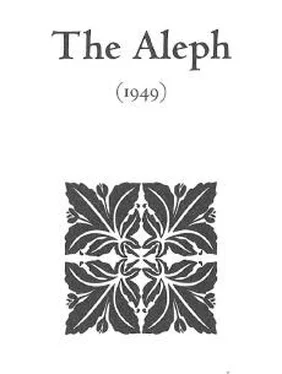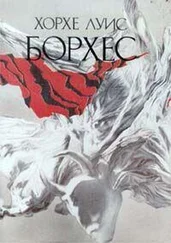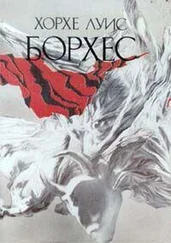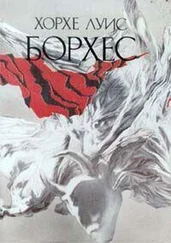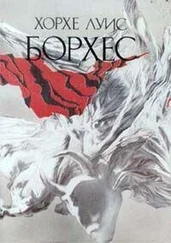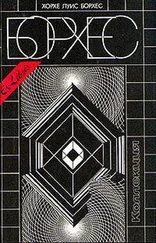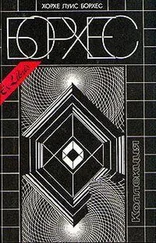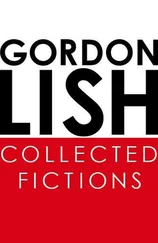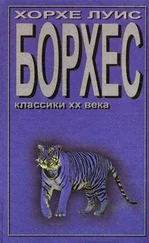Хорхе Борхес - Collected Fictions
Здесь есть возможность читать онлайн «Хорхе Борхес - Collected Fictions» весь текст электронной книги совершенно бесплатно (целиком полную версию без сокращений). В некоторых случаях можно слушать аудио, скачать через торрент в формате fb2 и присутствует краткое содержание. Год выпуска: 1999, ISBN: 1999, Издательство: Penguin (UK), Жанр: Старинная литература, на английском языке. Описание произведения, (предисловие) а так же отзывы посетителей доступны на портале библиотеки ЛибКат.
- Название:Collected Fictions
- Автор:
- Издательство:Penguin (UK)
- Жанр:
- Год:1999
- ISBN:9780140286809
- Рейтинг книги:5 / 5. Голосов: 1
-
Избранное:Добавить в избранное
- Отзывы:
-
Ваша оценка:
- 100
- 1
- 2
- 3
- 4
- 5
Collected Fictions: краткое содержание, описание и аннотация
Предлагаем к чтению аннотацию, описание, краткое содержание или предисловие (зависит от того, что написал сам автор книги «Collected Fictions»). Если вы не нашли необходимую информацию о книге — напишите в комментариях, мы постараемся отыскать её.
Collected Fictions — читать онлайн бесплатно полную книгу (весь текст) целиком
Ниже представлен текст книги, разбитый по страницам. Система сохранения места последней прочитанной страницы, позволяет с удобством читать онлайн бесплатно книгу «Collected Fictions», без необходимости каждый раз заново искать на чём Вы остановились. Поставьте закладку, и сможете в любой момент перейти на страницу, на которой закончили чтение.
Интервал:
Закладка:
p. 416: "Whitman is incapable of falsehood": Daniel Balderston believes that he has identified this poem: "When I heard at the close of the day," in Walt Whitman, Complete Poetry and Collected Prose, ed. Justin Kaplan (New York: Library of America), 1982, pp. 276-277. The essay in which Balderston identifies the poem referred to by the older"Borges"is "The 'Fecal Dialectic': Homosexual Panic and the Origin of Writing in Borges,"in ¿Entiendes?: Queer Readings, Hispanic Writing, ed. Emilie L. Bergmann and Paul Julian Smith (Durham/London: Duke University Press), 1995, pp. 29-45. While these notes are not intended to add "scholarly" information to the text of Borges, this remarkable identification, and the reading that accompanies it, in the translator's view warrants mention. The old man/young man motif, the public/private motif, the issue of "sex in the oeuvre o fBorges,"readings of a number of important stories, and, to a degree, the issue of violence in the fictions—all of these questions are impacted by Balderston's contentions in this essay.
The Congress
p. 423: The newspaper Ultima Hora:The title can be translated in two ways, The Eleventh Hour or The Latest News, depending on whether one wishes to give it an apocalyptic reading or a quotidian one.
p. 424: Confitería del Gas: This pastry shop (see also the note to p. 446,"Café Águila,"in the story "The Night of the Gifts" in this volume, for a further explanation of this sort of establishment) is located on Alsina between Bolivar and Defensa, about two blocks from the Casa de Gobierno (or as most Porteños know it, the Casa Rosada, or Pink House), at the River Plate end of the avenue that runs from the Casa de Gobiernoto the Plaza del Congreso. I have not been able to learn where this cafe's curious name came from, perhaps a gas-company office in the neighborhood; the problem with translating it into something such as Café Gasis, as the English-language reader will immediately perceive, the hint of indigestion that it (the translation and the name) leaves. Nor is it a truck stop. Clearly, in locating the confitería in this neighborhood, JLB is attempting to associate one "congress" with that of the institutionalized government in whose neighborhood it takes up residence. Porteños know this particular confitería as more of a pastry shop than a café perse;we are told that the meringues with crème de Chantilly are the house specialty.
p. 426: Rancher from the eastern province: Before Uruguay became a country, in 1828, it was a Spanish colony which, because it lay east of the Uruguay River, was called the Banda Oriental, or "eastern shore." (The Uruguay meets the Paranáto create the huge estuary system called the Río de la Plata, or River Plate; Montevideo is on the eastern bank of this river, Buenos Aires on the west.)"La Banda Oriental" is an old-fashioned name for the country, then, and "orientales," or "Easterners," is the equally old-fashioned name for those who live or were born there. Here, the narrator refers to "the eastern province" because for a very long time the shifting status of Uruguay— colony and protectorate of Spain, annex of Brazil and/or Argentina, etc.—led the nationalistic elements in Buenos Aires to consider it an "eastern province" of Argentina. Uruguay was founded on cattle raising.
p. 426: Artigas: José Gervasio Artigas (1764-1850), Uruguayan, a political and military leader who opposed first the Spaniards and then the Argentines who wished to keep the Banda Oriental (the east bank of the River Plate) in fealty to one or another of those powers. When Argentina, instead of supporting the Banda Oriental's independence from Spain, asserted Spain's authority over the area (in part to keep the Brazilians/ Portuguese out), Artigas led a huge exodus of citizens out of Montevideo and "into the wilderness." Recognized as a hero in Uruguay, he might not have been so regarded by a cosmopolite such as Glencoe, especially because of his legendary (but perhaps exaggerated) bloodthirstiness and his association with "the provinces" rather than "the city."
p. 427: Wops: "Gringo" was the somewhat pejorative term used for immigrant Italians; the closest English equivalent is "wop." As with all such designations, the tone of voice with which it is spoken will determine the level of offense; it can even be affectionate if spoken appropriately.
p. 427: Calle Junin: At this time, a street lined with brothels, many of which were relatively tame and in which men might not only solicit the services of prostitutes but also have a drink, talk, and generally be "at their ease."
p. 429: Palace of Running Waters: El Palacio de Aguas Corrientes is a building in central Buenos Aires housing a pumping station and some offices for the water company; it is an extravagantly decorated edifice, its walls covered in elaborate mosaic murals—a building that one Porteño described to this translator as "hallucinatory" and "absurd." The official name of this building is the "Grand Gravitational Repository"; it is, according to Buenos Aires, Ciudad Secreta by Germinal Nogués (Buenos Aires: Editorial Ruiz Diaz, 2nd éd., pp.244-245), located on the block bounded by Avenida Córdoba and calles Riobamba, Viamonte, and Ayacucho. It is set—or at least was—on one of the highest points of the city. The building of the Palace of Running Waters was begun in 1887, and it is a gigantic jigsaw puzzle designed by the Swedish engineer A. B. Nystromer. All this architectural effort was invested in a building destined to store 72,700,000 liters of water per day, which was the amount estimated to be needed for the daily consumption of the Porteños.... The four walls of this palace ... were capable of withstanding this pressure without support except at the center of each side. Solid buttresses were also incorporated into the design; these were set at intervals between the corner towers and the central towers, both inside and outside-----Vicente Blasco Ibáñez said of this edifice: "This 'palace' is not a palace. It has arcades and grand doors and windows but it is all a fake. Inside, there are no rooms. Its four imposing façades mask the retaining walls of the reservoir inside. The builders tried to beautify it with all this superfluity, so that it would not of-fend the aesthetic of the [city's] central streets."[Trans., A. H.]
p. 430: The chiripá... the wide-legged bombacha:These are articles of the dress of the gaucho. The chiripá was a triangular worsted shawl tied about the waist with the third point pulled up between the legs and looped into the knot to form a rudimentary pant or a sort of diaper. It was worn over a pair of pantaloons (ordinarily white) that "stick out" underneath. The bombacha is a wide-legged pant that was worn gathered at the calf or ankle and tucked into the soft boots, sometimes made of the hide of a young horse, that the gaucho wore. The bombacha resembles the pant of the Zouave infantryman.
p. 430: Those mournful characters in Hernández or Rafael Obligado: José Hernández (1834-1886), author of Martín Fierro, a long semi-epic poem celebrating the gaucho and his life; Rafael Obligado (1851-1920), a litterateur who hosted a literary salon and founded the Academia Argentina. Obligado was the author of a very well-known poem dealing with the life of a payador, or traveling singer, named Santos Vega. While the characters in these poems were portrayed not without defects, their lives and they themselves were to a degree romanticized; as ways of life perse, the gaucho and the payador were part of the mythology of Argentina. Borges examines these ways of life (and the literature that chronicled them) in many of his essays.
Читать дальшеИнтервал:
Закладка:
Похожие книги на «Collected Fictions»
Представляем Вашему вниманию похожие книги на «Collected Fictions» списком для выбора. Мы отобрали схожую по названию и смыслу литературу в надежде предоставить читателям больше вариантов отыскать новые, интересные, ещё непрочитанные произведения.
Обсуждение, отзывы о книге «Collected Fictions» и просто собственные мнения читателей. Оставьте ваши комментарии, напишите, что Вы думаете о произведении, его смысле или главных героях. Укажите что конкретно понравилось, а что нет, и почему Вы так считаете.
